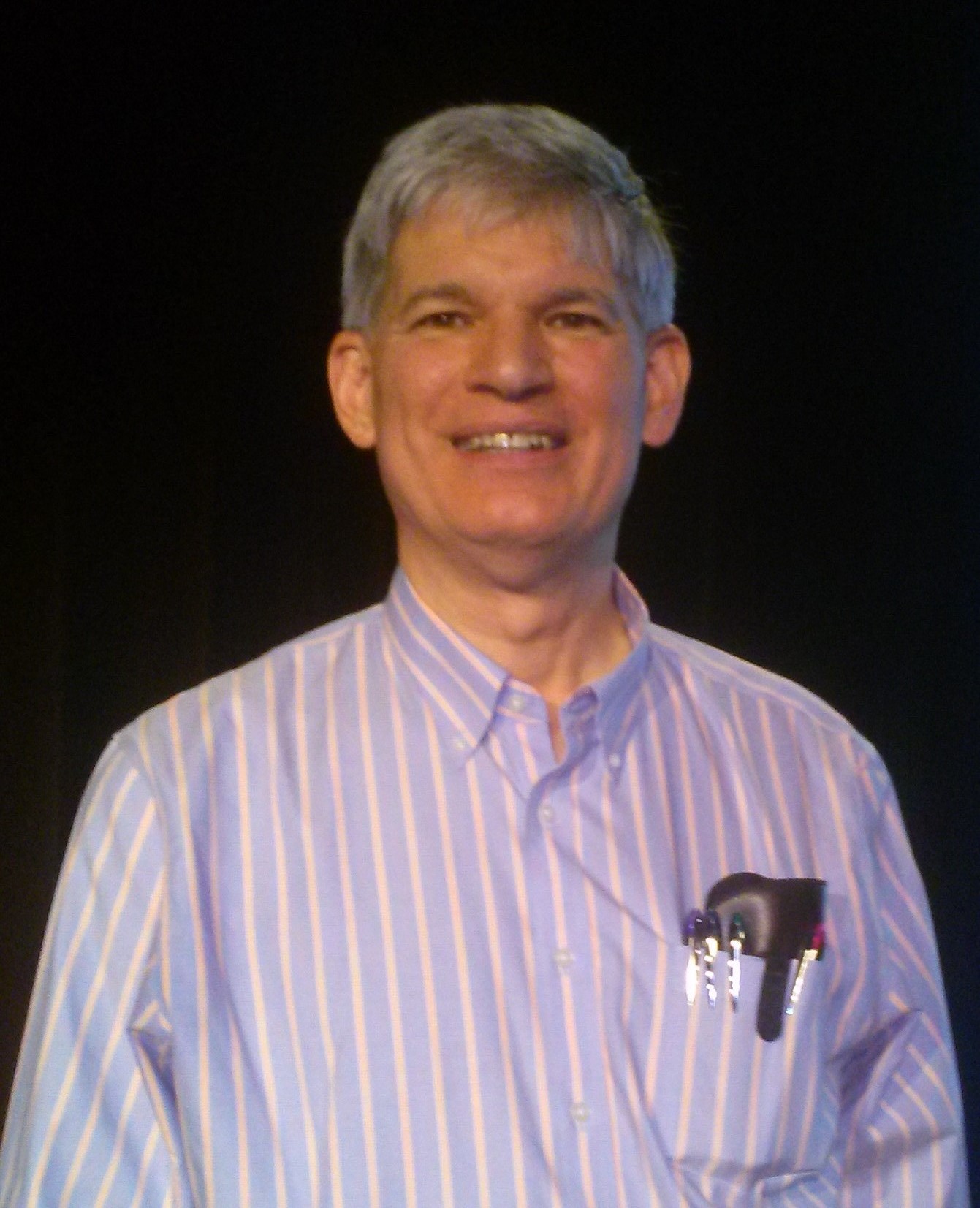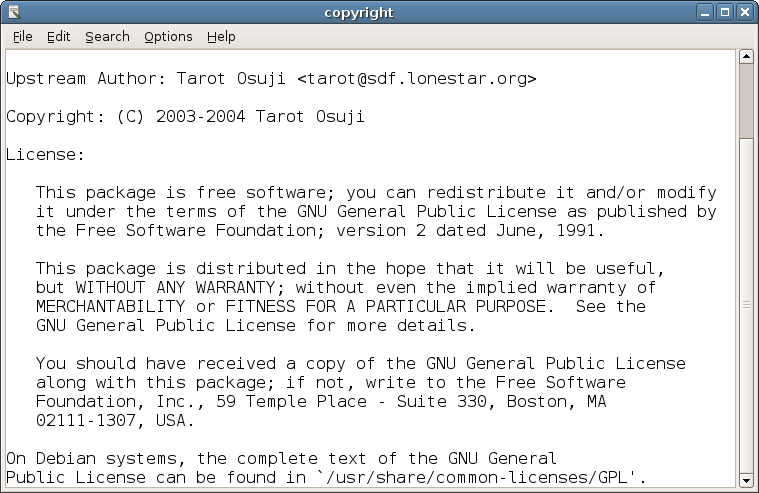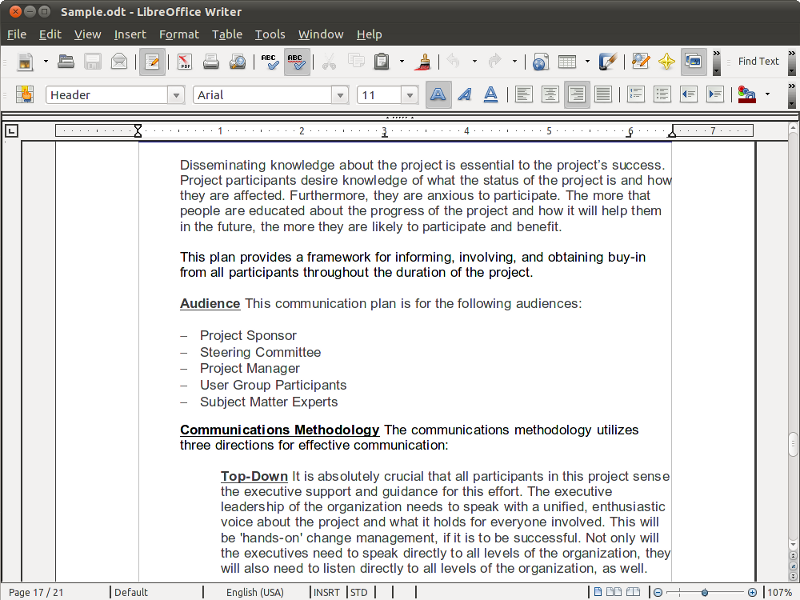|
MINCE
MINCE is a text editor, originally created for 8080-based microcomputers running the CP/M operating system. Later versions of MINCE were available for GEMDOS on the Atari ST, VAX/VMS, RSX-11, and various flavors of Unix. Developed in BDS C by Mark of the Unicorn, it was bundled with computers from Kaypro and Morrow Designs, and the Epson QX-10. It was a subset of Emacs (MINCE stands for "MINCE Is Not Complete Emacs") designed to run within the 64kB memory limit of 8-bit computers. MINCE used a gap buffer to fit within 48kB, and implemented a very efficient virtual memory system to support multiple buffers and a maximum file size limited only by available disk space. MINCE was a companion product to SCRIBBLE, a text formatter based on Scribe. This separation of duties into editor plus formatter was common among advanced word processors at that time. Although it was not open source, MOTU distributed partial code they deemed most useful for extending the product. In 1981, MINC ... [...More Info...] [...Related Items...] OR: [Wikipedia] [Google] [Baidu] |
Emacs
Emacs (), originally named EMACS (an acronym for "Editor Macros"), is a family of text editors that are characterized by their extensibility. The manual for the most widely used variant, GNU Emacs, describes it as "the extensible, customizable, self-documenting, real-time display editor". Development of the first Emacs began in the mid-1970s, and work on GNU Emacs, directly descended from the original, is ongoing; its latest version is , released . Emacs has over 10,000 built-in commands and its user interface allows the user to combine these commands into macro (computer science), macros to automate work. Implementations of Emacs typically feature a dialect (computing), dialect of the Lisp (programming language), Lisp programming language, allowing users and developers to write new commands and applications for the editor. Extensions have been written to, among other things, manage Dired, files, Secure Shell, remote access, Gnus, e-mail, Org-mode, outlines, multimedia, Magit, Git ... [...More Info...] [...Related Items...] OR: [Wikipedia] [Google] [Baidu] |
Perfect Writer
Perfect Writer is a word processor computer program published by Perfect Software for CP/M. In 1984, Thorn EMI Computer Software acquired an exclusive marketing and distribution licence for Perfect Software's products, and the program was rewritten and released as Perfect II for IBM PC compatible computers. Written in C and famous for its stability, it was an enhanced version of MINCE, which itself was a version of Emacs for microcomputer platforms. Emacs itself was too heavyweight to fit within the 64 KB RAM limit of most microcomputers. Like MINCE, it included a floppy disk based virtual memory system. Along with its companion spreadsheet (Perfect Calc), and database (Perfect Filer), Perfect Writer was bundled with early Columbia Data Products, Kaypro II and Morrow computers, as well as with the Torch Computers Z80 Disk Pack add-on for the BBC Micro and had a list price of . In the UK, it was bundled with the short lived Advance 86B PC (a near IBM compatible). It su ... [...More Info...] [...Related Items...] OR: [Wikipedia] [Google] [Baidu] |
Sprint (word Processor)
Sprint is a text-based word processor for MS-DOS, first published by Borland in 1987. History Sprint, originally known as The FinalWord application, is developed by Jason Linhart, Craig Finseth, Scott Layson Burson, Brian Hess, and Bill Spitzak at Mark of the Unicorn (MOTU) - a company (headquartered in Cambridge, MA) which is now better known for its music software products. At the time MOTU sold MINCE and SCRIBBLE, a text editor package based on Emacs. As The FinalWord, the package met with some success in the sense that the manuals of the Lotus software package were written on it, as was Marvin Minsky's book The Society of Mind. FinalWord II was renamed to Sprint when it was acquired by Borland, which added a new user interface, new manuals, and features to the application. The editor speed was considered blazing at the time, running with no delays on machines as slow as 8 megahertz. This was the time of European development for Borland: Sidekick and Turbo Pascal had been ... [...More Info...] [...Related Items...] OR: [Wikipedia] [Google] [Baidu] |
Mark Of The Unicorn
Mark of the Unicorn (MOTU) is a music-related computer software and hardware supplier developed by Jason Linhart, Craig Finseth, Scott Layson Burson, Brian Hess. It is based in Cambridge, Massachusetts and has created music software since 1984. In the mid-1980s, Mark of the Unicorn sold productivity software and several games for the Macintosh, Atari ST, and Amiga. Products Current * Digital Performer * AudioDesk Past * MINCE and SCRIBBLE, an Emacs-like editor and Scribe A scribe is a person who serves as a professional copyist, especially one who made copies of manuscripts before the invention of Printing press, automatic printing. The work of scribes can involve copying manuscripts and other texts as well as ...-like text formatter for CP/M machines. MINCE was also available for the Atari ST. * FinalWord word processor (sold and became Sprint). * Professional Composer, one of the first graphical music-notation editors. * Mouse Stampede, arguably the first arcade-styl ... [...More Info...] [...Related Items...] OR: [Wikipedia] [Google] [Baidu] |
Scribe (markup Language)
Scribe is a markup language and word processing system that pioneered the use of descriptive markup. Scribe was revolutionary when it was proposed, because it involved for the first time a clean separation of presentation and content. History Beginnings Scribe was designed and developed by Brian Reid of Carnegie Mellon University. It formed the subject ohis 1980 doctoral dissertation for which he received the Association for Computing Machinery's Grace Murray Hopper Award in 1982. Reid presented a paper describing Scribe in the same conference session in 1981 in which Charles Goldfarb presented GML (developed in 1969), the immediate predecessor of SGML. Sale to Unilogic In 1979, at the end of his graduate-student career, Reid sold Scribe to a Pittsburgh-area software company called Unilogic (later renamed Scribe Systems), founded by Michael Shamos, another Carnegie Mellon computer scientist, to market the program. Reid said he simply was looking for a way to unload the progr ... [...More Info...] [...Related Items...] OR: [Wikipedia] [Google] [Baidu] |
BDS C
BDS C (or the ''BD Software C Compiler'') is a compiler for a sizeable subset of the C programming language, that ran on and generated code for the Intel 8080 and Zilog Z80 processors. It was the first C compiler for CP/M. It was written by Leor Zolman and first released in 1979 when he was 20 years old. "BDS" stands for "Brain Damage Software." BDS C was popular and influential among CP/M users and developers. It ran much faster than other Z80-hosted compilers. It was possible to run BDS C on single-floppy machines with as little as 30K of RAM in comparison to most other commercial compilers which required many passes and the writing of intermediate files to disk. Weak points of BDS C were that the floating point math routines and the file access functions were incompatible with the C compiler used on UNIX, and that its relocatable object files were incompatible with the Microsoft MACRO-80 assembler, making it more difficult to integrate C code with assembly language. BDS C w ... [...More Info...] [...Related Items...] OR: [Wikipedia] [Google] [Baidu] |
Kaypro
Kaypro Corporation was an American home and personal computer manufacturer based in Solana Beach, California, in the 1980s. The company was founded by Non-Linear Systems (NLS) to compete with the popular Osborne 1 portable microcomputer. Kaypro produced a line of rugged, luggable CP/M-based computers sold with an extensive software bundle which supplanted its competitors and quickly became one of the top-selling personal computer lines of the early 1980s. Kaypro was exceptionally loyal to its original customer base but slow to adapt to the changing computer market and the advent of IBM PC compatible technology. It faded from the mainstream before the end of the decade and was eventually forced into bankruptcy in 1992. History Kaypro began as Non-Linear Systems (NLS), a maker of electronic test equipment, founded in 1952 by Andrew Kay, the inventor of the digital voltmeter. In the 1970s, NLS was an early adopter of microprocessor technology, which enhanced the flexibility of pro ... [...More Info...] [...Related Items...] OR: [Wikipedia] [Google] [Baidu] |
Text Editor
A text editor is a type of computer program that edits plain text. An example of such program is "notepad" software (e.g. Windows Notepad). Text editors are provided with operating systems and software development packages, and can be used to change files such as configuration files, documentation files and programming language source code. Plain text and rich text There are important differences between plain text (created and edited by text editors) and rich text (such as that created by word processors or desktop publishing software). Plain text exclusively consists of character representation. Each character is represented by a fixed-length sequence of one, two, or four bytes, or as a variable-length sequence of one to four bytes, in accordance to specific character encoding conventions, such as ASCII, ISO/IEC 2022, ISO/IEC 2022, Shift JIS, UTF-8, or UTF-16. These conventions define many printable characters, but also whitespace character, non-printing characters th ... [...More Info...] [...Related Items...] OR: [Wikipedia] [Google] [Baidu] |
CP/M Software
CP/M, originally standing for Control Program/Monitor and later Control Program for Microcomputers, is a mass-market operating system created in 1974 for Intel 8080/ 85-based microcomputers by Gary Kildall of Digital Research, Inc. CP/M is a disk operating system and its purpose is to organize files on a magnetic storage medium, and to load and run programs stored on a disk. Initially confined to single-tasking on 8-bit processors and no more than 64 kilobytes of memory, later versions of CP/M added multi-user variations and were migrated to 16-bit processors. CP/M's core components are the ''Basic Input/Output System'' (BIOS), the ''Basic Disk Operating System'' (BDOS), and the ''Console Command Processor'' (CCP). The BIOS consists of drivers that deal with devices and system hardware. The BDOS implements the file system and provides system services to applications. The CCP is the command-line interpreter and provides some built-in commands. CP/M eventually became the '' ... [...More Info...] [...Related Items...] OR: [Wikipedia] [Google] [Baidu] |
Word Processor
A word processor (WP) is a device or computer program that provides for input, editing, formatting, and output of text, often with some additional features. Early word processors were stand-alone devices dedicated to the function, but current word processors are word processor programs running on general purpose computers, including smartphones, tablets, laptops and desktop computers. The functions of a word processor program are typically between those of a simple text editor and a desktop publishing program; Many word processing programs have gained advanced features over time providing similar functionality to desktop publishing programs. Common word processor programs include LibreOffice Writer, Google Docs and Microsoft Word. Background Word processors developed from mechanical machines, later merging with computer technology. The history of word processing is the story of the gradual automation of the physical aspects of writing and editing, and then to the refinement ... [...More Info...] [...Related Items...] OR: [Wikipedia] [Google] [Baidu] |
Software Suite
A software suite (also known as an application suite) is a collection of computer programs (application software, or programming software) of related functionality, sharing a similar user interface and the ability to easily exchange data with each other. Features Advantages * Less costly than buying individual packages * Identical or very similar GUI * Designed to interface with each other * Helps the learning curve of the user Disadvantages * Not all purchased features are always used by the user * Takes a significant amount of disk space ( bloatware), as compared to buying only the needed packages * Requires effort to use the packages together Types * Office suites, such as Microsoft Office * Internet suites * Graphics suite, such as Adobe Creative Cloud * IDEs, such as Eclipse, and Visual Studio See also * Application software * Package (package management system) * Runtime environment In computer programming, a runtime system or runtime environment is a sub-sy ... [...More Info...] [...Related Items...] OR: [Wikipedia] [Google] [Baidu] |



